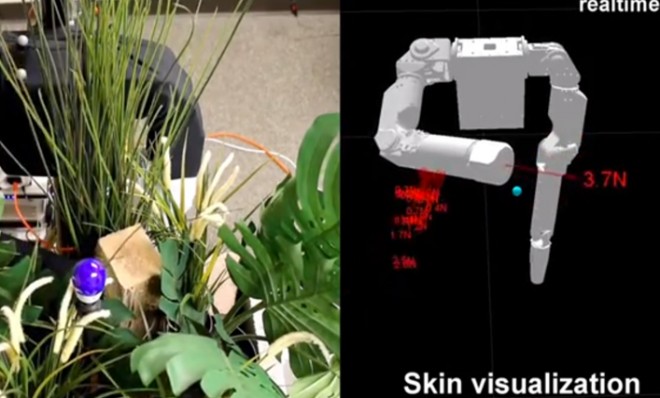Feelin' alive: Why giving robots a sense of touch is such a big deal
Researchers are developing skin that will help machines feel the world around them

Hate to break it to you, but you're a lot more sensitive than you think you are. No, not emotionally, but in your unconscious ability to sense touch. Every time you press a key or brush against someone on the subway, complex signals are beamed to your brain and back so that you don't break anything or knock a poor old lady over. That's why, thankfully, most of us aren't Lennie Small.
Unfortunately, the same can't be said for robots, at least not yet. Generally speaking, machines are strong, clumsy, and incapable of feeling — a potent combo for danger if there ever was one. It's why factory 'bots are usually tucked far away from human workers, so the risk of doing damage to our brittle little frames is kept to a minimum.
Slowly but surely, though, that is starting to change. Machines are, in fact, becoming more sensitive. Researchers at the Georgia Institute of Technology in Atlanta are working on a new generation of robotic arms equipped with human-like dexterity, allowing them to tackle everyday tasks current machines can't, like trimming a flower garden.
The Week
Escape your echo chamber. Get the facts behind the news, plus analysis from multiple perspectives.

Sign up for The Week's Free Newsletters
From our morning news briefing to a weekly Good News Newsletter, get the best of The Week delivered directly to your inbox.
From our morning news briefing to a weekly Good News Newsletter, get the best of The Week delivered directly to your inbox.
While most intelligent machines are made to avoid contact with their surroundings altogether, these touchy-feely limbs are designed to gently brush against the world around them without doing any damage. In addition to computerized "eyes," these robots possess a layer of artificial skin that can respond to external touch and pressure. "We're flipping that on its head," Dr. Charles C. Kemp, director of the Healthcare Robotics Lab at Georgia Tech, tells the New York Times. "Let's say contact with the arm is fine, as long as the forces are low."
Take the example above. The arm is designed "to intelligently move within an environment, to maneuver around clutter," says Dr. Kemp. Such technology would be invaluable in a number of industries, including, but not limited to, health care (in which robotic caretakers could prove essential). Consider the case of Henry Evans, a quadriplegic who gave the prototype a go. With some slick maneuvering, the robotic arm was able to cover Evans in a blanket and tuck him into bed.
It's still inelegant, sure, but programming a mechanical arm to navigate its fragile surroundings is a small but necessary step towards a future in which robots are truly a part of our lives. Whether they'll ever know why humans cry, on the other hand, may be the just the stuff of science fiction.
A free daily email with the biggest news stories of the day – and the best features from TheWeek.com
-
 Pakistan: Trump’s ‘favourite field marshal’ takes charge
Pakistan: Trump’s ‘favourite field marshal’ takes chargeIn the Spotlight Asim Munir’s control over all three branches of Pakistan’s military gives him ‘sweeping powers’ – and almost unlimited freedom to use them
-
 Codeword: December 6, 2025
Codeword: December 6, 2025The daily codeword puzzle from The Week
-
 Sudoku hard: December 6, 2025
Sudoku hard: December 6, 2025The daily hard sudoku puzzle from The Week